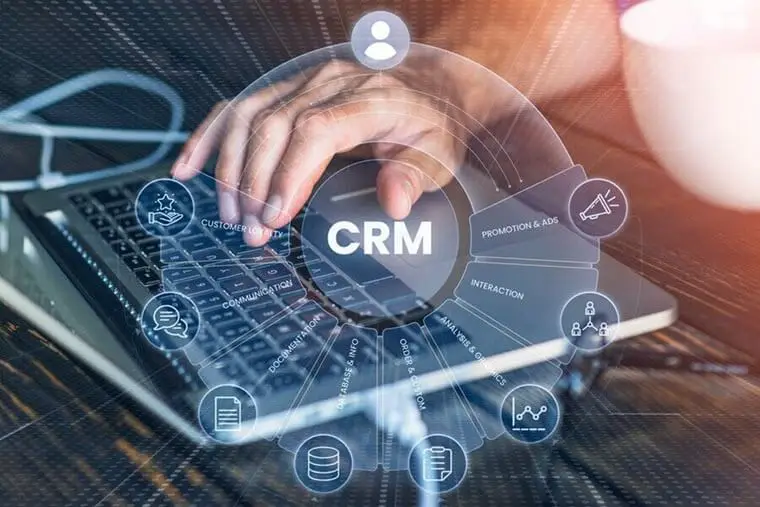How ERP-CRM Integration Helps You Stay Ahead of Competitors

In today’s fast-paced business environment, staying ahead of competitors is no longer just about offering great products or services—it’s about delivering exceptional customer experiences, making data-driven decisions, and operating with unmatched efficiency. This is where ERP CRM integration comes into play. By seamlessly connecting your Enterprise Resource Planning (ERP) and Customer Relationship Management (CRM) systems, you can unlock a competitive edge that sets your business apart. Here’s how:
1. Unified Data for Smarter Decision-Making:
One of the biggest challenges businesses face is managing data scattered across multiple systems. ERP handles back-end operations like inventory, finance, and supply chain, while CRM focuses on customer interactions, sales, and marketing. When these systems operate in silos, critical insights are lost, and decision-making becomes sluggish.
How Integration Helps
- Real-Time Data Access: Integration ensures that all departments have access to the same, up-to-date information. For example, your sales team can check inventory levels in real-time before promising delivery dates to customers.
- 360-Degree Customer View: By combining CRM’s customer data with ERP’s operational insights, you gain a complete picture of customer behavior, preferences, and purchasing patterns. This enables you to anticipate needs and tailor your offerings accordingly.
Competitive Advantage: Faster, data-driven decisions allow you to respond to market changes more quickly than competitors who rely on fragmented data.
2. Enhanced Customer Experience:
In a world where customer expectations are higher than ever, delivering personalized and seamless experiences is key to winning and retaining customers. Disconnected systems often lead to inconsistent communication, delayed responses, and frustrated customers.
How Integration Helps
- Personalized Interactions: With integrated systems, your sales and support teams can access customer history, past purchases, and preferences in one place. This enables them to provide personalized recommendations and resolve issues faster.
- Streamlined Processes: From order placement to delivery, integration ensures smooth workflows. For instance, when a customer places an order, the CRM updates the ERP system automatically, triggering inventory checks and shipping processes without manual intervention.
Competitive Advantage: A superior customer experience leads to higher satisfaction, loyalty, and repeat business—putting you ahead of competitors who struggle with disjointed processes.
3. Improved Operational Efficiency:
Manual data entry, duplicate records, and inefficient workflows are common pain points for businesses using separate ERP and CRM systems. These inefficiencies consume valuable time and elevate the risk of errors.
How Integration Helps
- Automated Workflows: Integration eliminates the need for manual data transfer between systems. For example, when a sales representative closes a deal in the CRM, the ERP system automatically generates an invoice and updates inventory.
- Reduced Errors: With a single source of truth, the likelihood of data discrepancies and errors decreases significantly.
Competitive Advantage: By streamlining operations, you can reduce costs, improve productivity, and focus on strategic initiatives that drive growth—outpacing competitors bogged down by inefficiencies.
4. Faster Time-to-Market:
In competitive industries, speed is everything. Whether it’s launching a new product or responding to customer demands, delays can cost you market share.
How Integration Helps
- Accelerated Processes: Integration ensures that sales, production, and distribution teams are aligned. For example, when a new order comes in, the ERP system can immediately trigger production or procurement processes.
- Better Collaboration: With shared data, teams can collaborate more effectively, reducing bottlenecks and speeding up project timelines.
Competitive Advantage: Faster time-to-market allows you to capitalize on opportunities before competitors can react.
5. Scalability for Future Growth:
As your business expands, operational complexities increase. Without integrated systems, scaling becomes a challenge, leading to inefficiencies and missed opportunities.
How Integration Helps
- Seamless Scalability: Integrated ERP and CRM systems are designed to grow with your business. Whether you’re adding new products, entering new markets, or expanding your customer base, integration ensures that your systems can handle the increased workload.
- Centralized Management: A unified platform makes it easier to manage multiple locations, departments, or business units.
Competitive Advantage: Scalability ensures that you can grow without losing efficiency or customer focus, giving you an edge over competitors who struggle to adapt.
6. Data-Driven Marketing and Sales Strategies:
In today’s competitive landscape, generic marketing and sales approaches no longer cut it. Customers expect personalized, relevant interactions, and achieving this requires deep insights into their behavior and preferences.
How Integration Helps
- Targeted Campaigns: By combining CRM’s customer data with ERP’s sales and inventory data, you can create highly targeted marketing campaigns. For example, you can identify high-value customers and offer them exclusive deals or upsell opportunities.
- Sales Forecasting: Integrated systems provide accurate sales forecasts by analyzing historical data, current trends, and inventory levels.
Competitive Advantage: Data-driven strategies enable you to maximize ROI on marketing efforts and close deals more effectively than competitors relying on guesswork.
7. Proactive Problem-Solving:
In a competitive market, the ability to anticipate and address issues before they escalate is a game-changer. Disconnected systems often lead to reactive problem-solving, which can damage customer relationships and brand reputation.
How Integration Helps
- Early Warning Systems: Integrated systems can flag potential issues, such as inventory shortages or delayed shipments, allowing you to take corrective action before they impact customers.
- Improved Customer Support: With access to real-time data, your support team can resolve customer issues faster and more effectively.
Competitive Advantage: Proactive problem-solving enhances customer trust and loyalty, setting you apart from competitors who are constantly playing catch-up.
ERP and CRM integration is no longer a luxury—it’s a necessity for businesses looking to stay ahead of competitors. By unifying your systems, you can streamline operations, deliver exceptional customer experiences, and make smarter, faster decisions. In a world where every second counts, integration gives you the agility, efficiency, and insights needed to outperform the competition.
At The Farber Consulting Group Inc., we specialize in ERP-CRM integration to streamline your business operations. By seamlessly connecting enterprise resource planning (ERP) and customer relationship management (CRM) systems, we help you improve efficiency, enhance data accuracy, and boost customer engagement. Let us optimize your workflows and give your business a competitive edge.


Comments